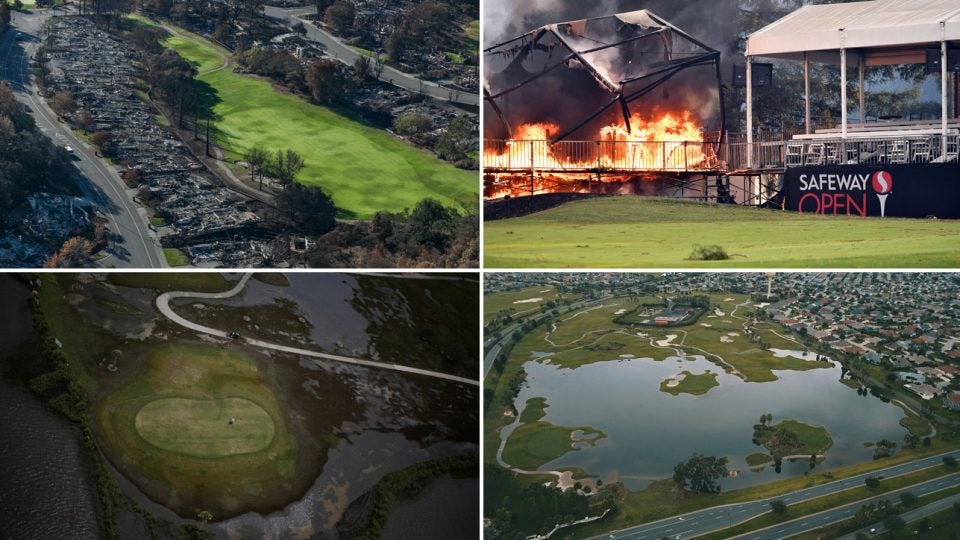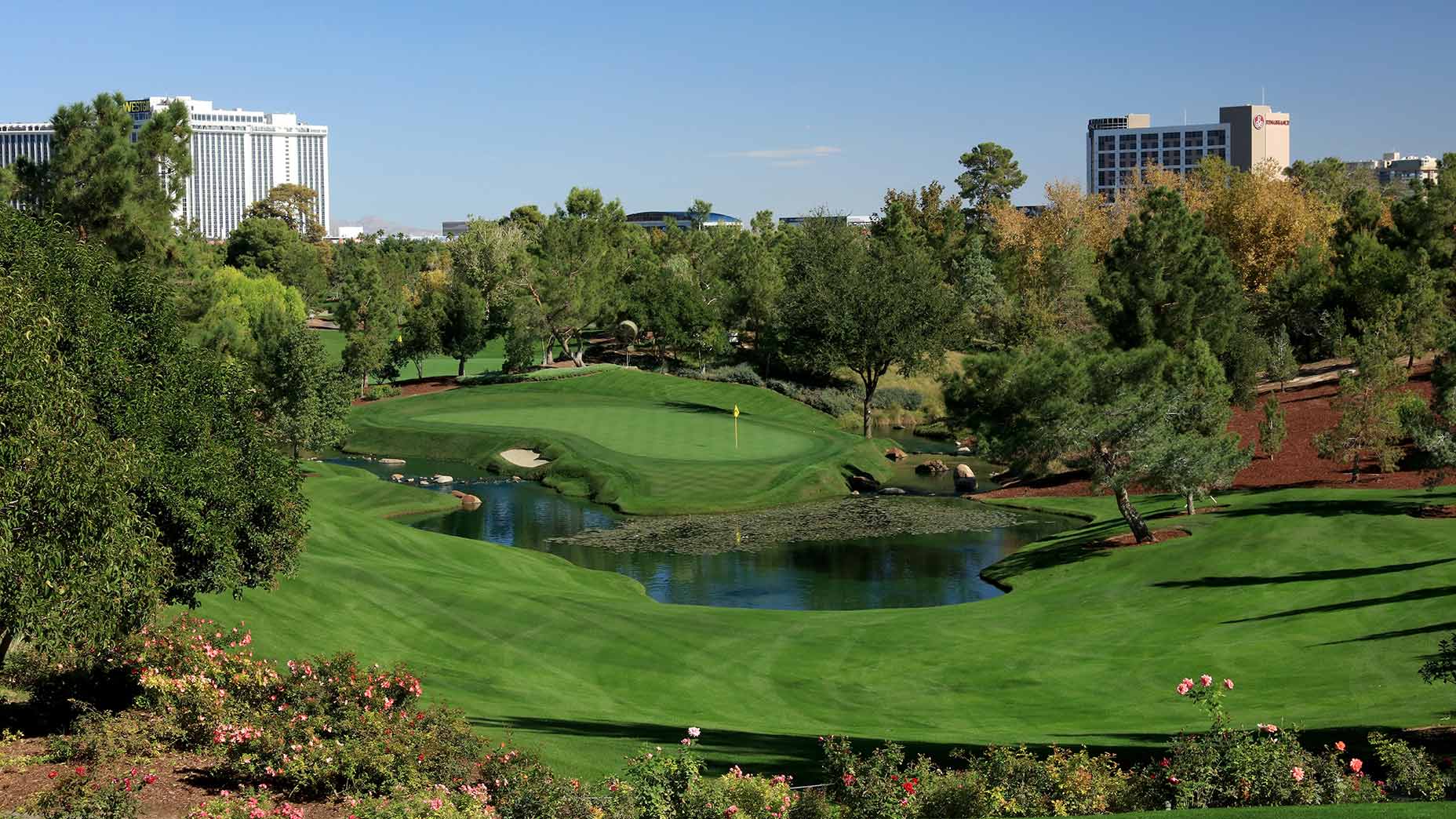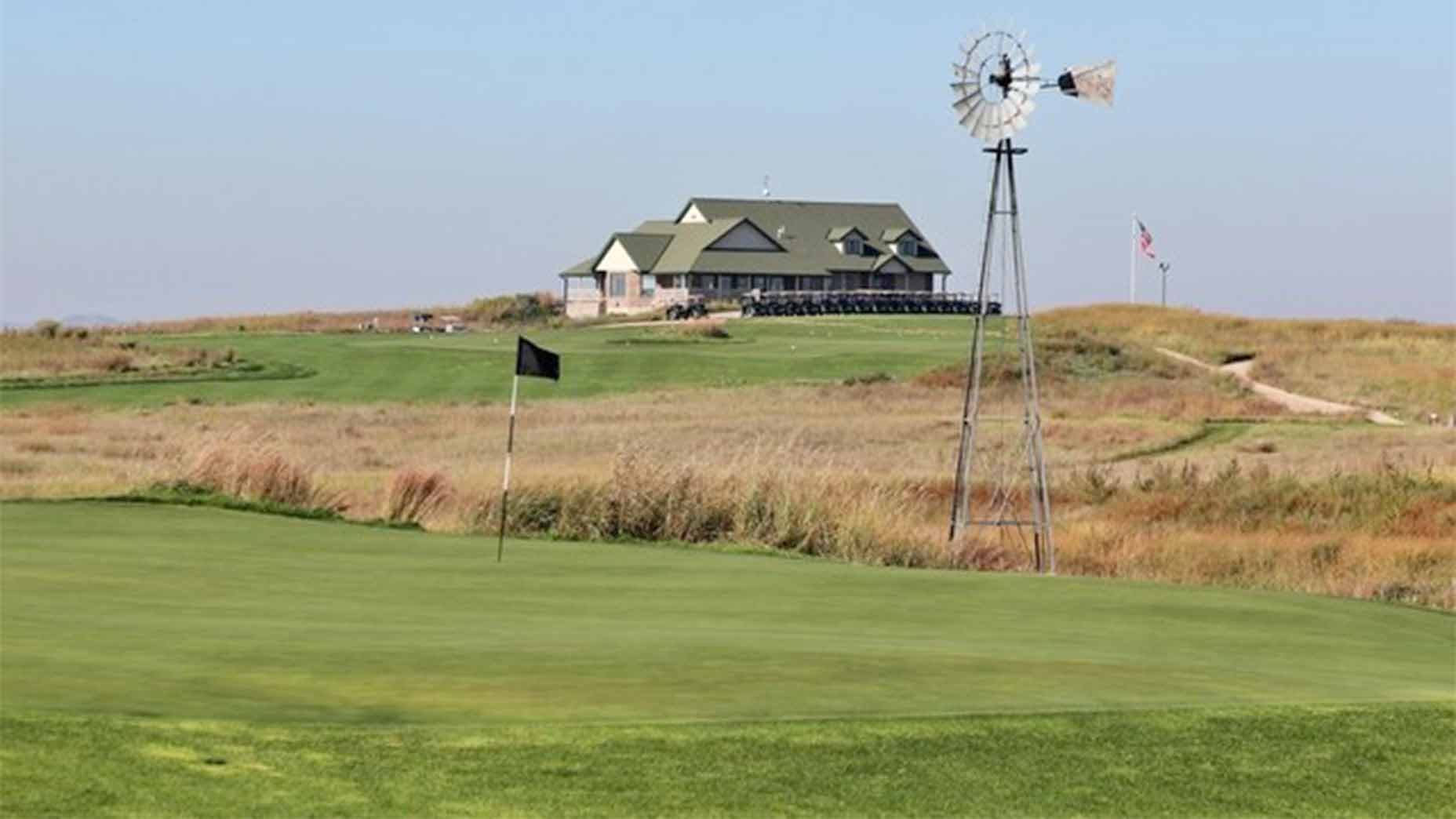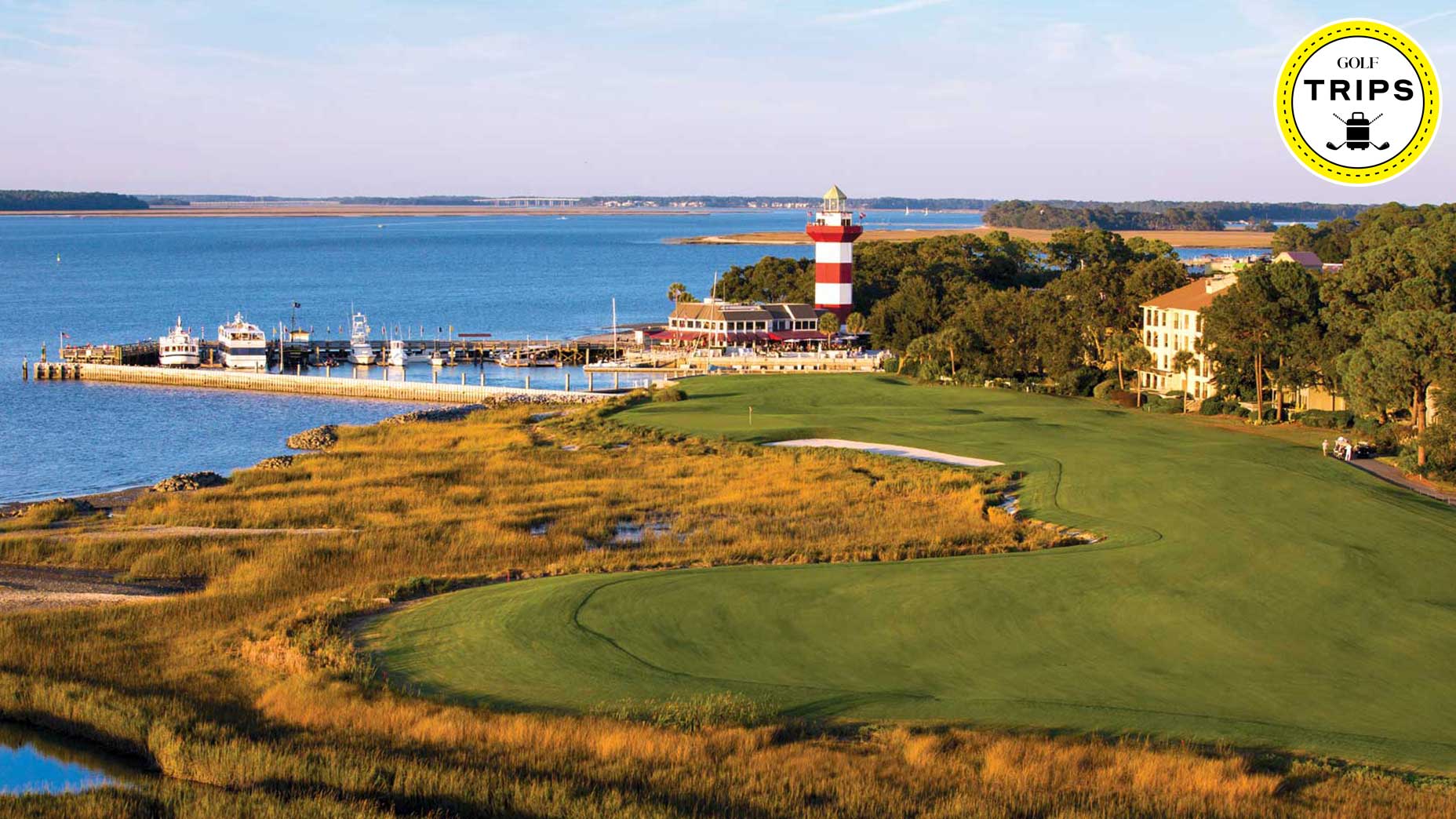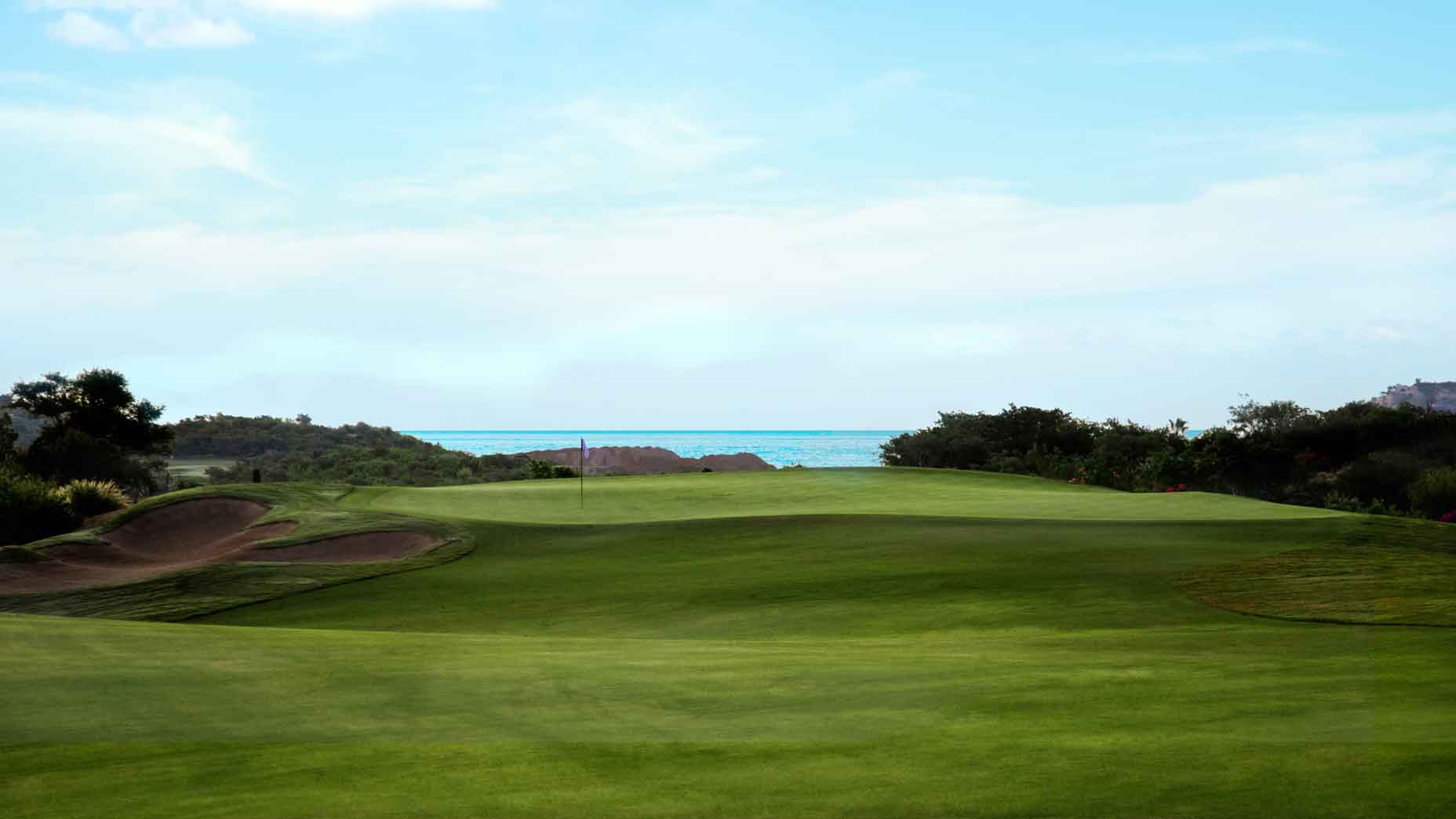On May 3, 2016, smoke rose across the river from Fort McMurray Golf Club.
The day was unseasonably warm for northern Alberta, and the course had just opened for the season. The tee sheet was full. So was the restaurant. Golfers joked out on the patio as they snapped photos of the billowing plumes.
“Around here a fire is a pretty common thing,” said Jason Vaughan, the club’s head pro. “As bad as it may be, you get used to it.”
Vaughan’s assistant dropped by Vaughan’s office to notify him of what was happening. No big deal, the pro thought. A few minutes later, though, the assistant returned, this time with more urgency in his voice: “Come take a look at this, Jay.”

Vaughan stepped outside and saw that entire swaths of forest on the far banks of the Athabasca River had vanished, enveloped in a dark, angry smoke. The consensus around town had been that the course was not in danger, given the river was nearly a half-mile wide at this point. But now the inferno was burning hotter and spreading faster than anyone had predicted.
Another club employee, Colleen Stewart, received a call from the fire department where her husband worked. The order was clear.
“Get everybody out — now.”
* * * * * * *
In the wake of natural disasters, images of torched or flooded golf courses often serve to illustrate the extent of the devastation. When wildfires roared into Napa Valley in October, the first photos that emerged were of burning bleachers at the Silverado Resort, which was just hours removed from hosting a PGA Tour event. In the wake of Hurricanes Harvey and Irma, news reports showed floodwaters transforming Houstonian fairways into rivers and Floridian greens into islands.
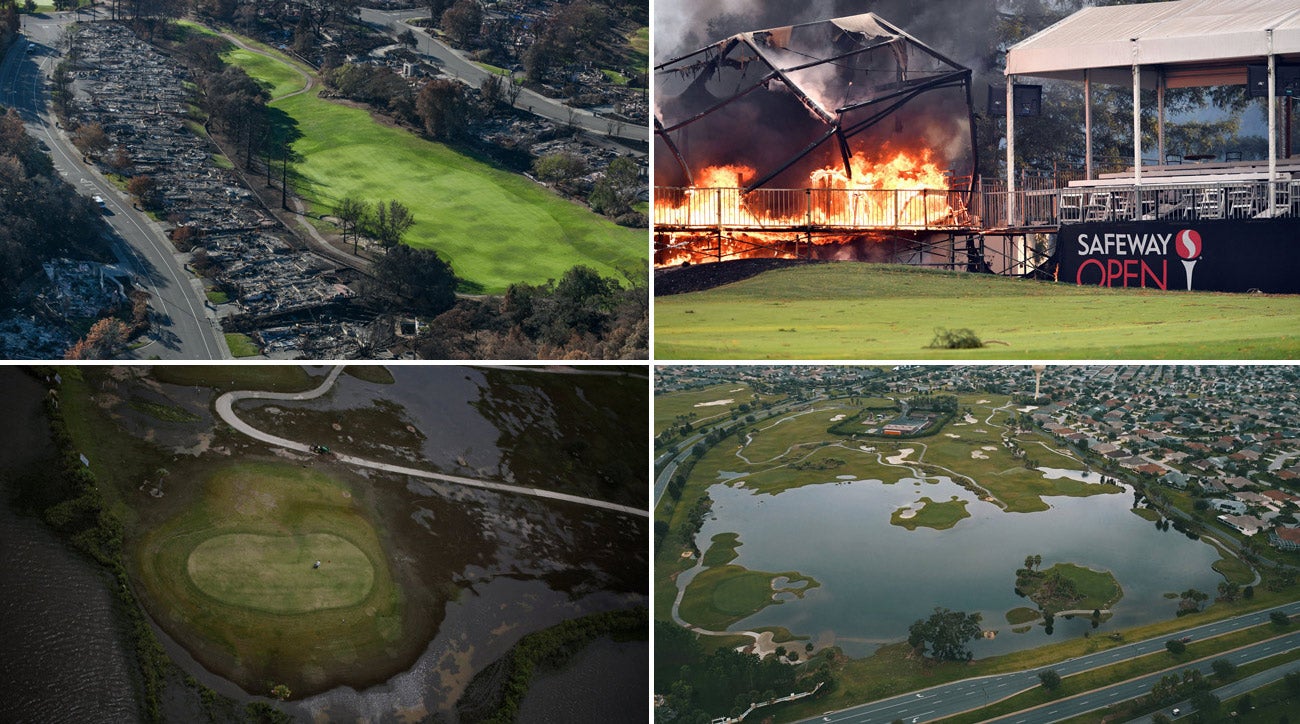
Vaughan and Stewart have their own awful images from May 2016.
“I don’t know if you’ve see the pictures or not,” Vaughan said, “but the clubhouse literally just looked like a big hole in the ground, and the dirt kind of just fell into the basement.”
But the wardens of Fort McMurray refused to let the disaster define their community, or their course. Vaughan remains attached to a powerful idea: If golf courses can emblemize a city’s devastation, they can also serve as agents of its revitalization.
“It gets better,” Vaughan said. “We’re coming back bigger and better.”

To understand the impact of the Fort McMurray fire, you first must understand how the community looked before May 2016, and how “bigger and better” was part of the frontier town’s dream long before the fire reached its borders.
Fort Mac, as it’s called locally, was a remote fur trading outpost for hundreds of years before it became an oil boomtown, hewn from Alberta’s boreal forest, where people from across the continent came seeking higher wages, fresh starts, and better lives. As crude oil prices surged after the turn of the millennium, international investors poured nearly a quarter-trillion dollars over the next 15 years into sprawling tar sands just north of town. Where Cree tribes had once used the oil deposits to waterproof their canoes, massive dump trucks now rolled through the oil sands mines, weighing two million pounds when fully loaded. Suncor, Syncrude, Shell, Chevron, and Exxon led a high-powered list of corporations that launched projects drilling in the Athabascan oil sands.
Fort Mac’s extreme remoteness has also helped shape its character. There’s only one road in and out, so unless you’re driving from Calgary to the North Pole, you’re unlikely to end up there by accident. “People are from everywhere else, so your friends become your family,” Stewart said.
Stewart, 40, wears several hats at Fort McMurray Golf Club as food, beverage and tournament director, and saw the population boom firsthand. When she and her husband Kevin McNiff moved to town in 2004, the Fort McMurray area had about 40,000 residents. Over the next decade that number nearly tripled, and the growth overwhelmed the local infrastructure. Business boomed, including at the golf club. “I can’t imagine that many golf courses in all of Canada were busier than our course,” Vaughan said. “We would pretty much be open and busy from 6 a.m. until 8:30 at night, when our last tee time went off.”
Fort Mac is so far north that on harsh winter days, the sun only separates fully from the horizon for a few hours. During Fort Mac’s golf season, however, the sun hardly sets. If you can stand the mosquitoes, you can play virtually all night.
Work in Fort Mac’s oil camps is lucrative but also stressful and isolating. As such, Fort McMurray Golf Club, which is one of just two courses in the area, has always meant something extra to the hardworking town, where people are hungry for recreation and community, particularly on summer days that are endless but fleeting. Locals looking for a game with friends found that and much more at the course, where most holes are cut from the thick woods on the edge of the broad, blue Athabasca River.

For several years, the course hosted a PGA Tour Canada event, which provided a welcome connection to the world beyond the sands. “I know my members talk about it like, ‘Hey, we had Tony Finau stay at our house,'” Vaughan said. “It’s different for Fort Mac, where we don’t get all the events a big city would get. It’s fun to have a week where there’s something going on.”
The itinerant tour pros that would come through were a natural fit in this town, which, during boom times, was overflowing with short-term contractors and consultants. The pro golfers’ ears would perk up as they talked to some of the well-compensated oil workers and entertained thoughts that two months’ work in the tar sands could sponsor two years’ travel and tournament fees.
Fort Mac seemed bigger and better, indeed.
So when the smoke rose across the river on that perfect spring day, the blaze threatened more than just fairways and greens — it threatened a way of life.
* * * * * *
When Vaughan sounded the evacuation order, golfers vacated the course almost immediately. Yet there was still little sense that the city was in imminent danger. As the club employees headed up the hill to the main road, they assumed they’d be back at work the next day, after the smoke had retreated. They talked about meeting for beers.
But then city officials called for a complete evacuation of Fort McMurray. Residents packed up their cars and overwhelmed the city’s limited roadways. Stewart, who lives near the golf course, picked up her 3-year-old daughter and her sister-in-law and grabbed a bag before hitting the road. “It was gridlock,” she said. “Even near the golf course, people were going maybe a block in an hour.”
Then the fire did what everyone had said was impossible: It jumped the river. The hot, dry wind had carried embers over the water and ignited the course.
“You look to the right and you see it there, the original fire that was coming from up the highway,” Stewart said. She immediately feared for her firefighter husband, who had stayed to help people evacuate. “You look over in the direction of the plant and up on your right and you’re just like, oh my gosh.”
Vaughan picked up his brother and sister-in-law and headed north. Seven hours later they made it to Shell, a drive that normally takes 45 minutes. In the photos that emerged in the wake of the evacuation, abandoned cars and trucks littered the side of the highway. “I know buddies who left their trucks on the side of the road and started running and jumped in trucks ahead because you couldn’t go anywhere,” Vaughan said. Some fled north; others south. They ended up in Edmonton, Calgary, and areas beyond, taking shelter wherever they could. Firefighters and a small group of city officials were the only people permitted to stay behind.

Over the coming days, a gloom settled over the abandoned city. McNiff and the rest of the region’s firefighters worked tirelessly as the fire spread unpredictably. They tried unconventional methods to keep the fire from spreading but feared the entire city would be razed. The blaze moved quietly, quickly, invisibly, surrounding the city. They called it The Beast.
The firefighters, who stayed in Fort Mac for weeks after the evacuation, were outmatched but fought on. Hydrants ran out of water. Entire rows of houses went up in flames. Firefighters in the Birchwood neighborhood found some usable golf carts back at burnt-out Fort McMurray Golf Club and loaded them up with water barrels to patrol and fight fires in the surrounding area. It felt futile, firefighters said afterward, but they saved far more houses than they lost. Without the firefighters’ efforts “[the town] would be gone,” Jody Butz, the fire operations chief, told the Edmonton Journal in the days that followed.
For weeks, people knew little or nothing. Early reports suggested that as many as 90 percent of the city’s structures had burned. Information was hard to come by for evacuees scattered across the country.
The Canadian golf community opened its arms to displaced residents. Evacuees that had settled in Edmonton were given free greens fees and rental clubs, and several local tournaments cropped up as fundraisers for relief efforts. “The golf courses were calling, offering our employees jobs,” Stewart said. “If they could get to Winnipeg, it was ‘Oh, I’ve got a golf course job here.’ People were sending money from courses, fundraisers we didn’t even know about.”
PGA Tour Canada declared that the event scheduled for Fort Mac would be rescheduled and relocated, but that the proceeds would be donated back to the community.
Several weeks after the fire, people began to return to Fort McMurray, unsure of what to expect.
The Beast had burned through nearly 4,000 square miles in what would prove to be the costliest disaster in Canadian history. Nearly a quarter of the buildings in the city were razed, including every major structure at Fort McMurray Golf Club. The treetops were gone, too, but the grass — watered, closely-mown, unburnable — survived.
There’s the key: When a golf course burns, the course itself doesn’t burn — just everything around it. Thus by their very physical properties, golf courses are well-suited to survive fires and, in this case, aid in the city’s recovery. Fort McMurray’s grounds crew worked 14-hour days in an effort to reopen the course, in any form.
Stewart was moved — though not necessarily surprised — by how quickly people migrated back to the course. “After the fire, for sure people would drive by their house, or their lot if their house had burned down,” she said. “And then within a couple hours they were down at the golf course, sharing stories. They’d drive down to see it, to check on it. They were like, ‘This is my second home!'”

In June, the driving range opened up for a day. They set up a tent, tables, and chairs outside and took to calling the parking lot “Fort McMurray’s biggest patio.” On July 1, less than two months after the fire and with many residents still displaced, the course reopened. “We made the point of opening as quick as we could just to say okay, you’re getting out, you’re outside, and feeling a bit of normalcy,” Stewart said. “You’re with your friends, and it was huge for everybody because it was just such talk therapy, like what’s your story, what’s your story, what’s your story?
You could just hear it in the conversations: ‘Oh yeah, I can come and help you,’ or ‘Oh, I have extra of this.’ Or, ‘oh, your thing burned down, where are you renting? I know of a place that you can…’ and so on. … It was just this crazy bond.”
* * * * * *
In the days since the recovery, play has remained steady at the club, although rounds are down from the peak several years ago. The drop comes partly as a result of the fire but also from the new economic reality of Alberta’s oil industry. Fort Mac is a boomtown, at its roots, and times aren’t so booming. The decline had begun as early as 2014, when an increase in U.S. shale production sent oil prices plunging. Whether from fire or industry, some 5,000 fewer people live in Fort Mac now compared to 2015.
There is also the looming threat of another fire. It’s a tragic irony: an oil-industry hotbed falling prey to a fire fueled by record warm temperatures. Fort Mac exists because of its proximity to the tar sands, and yet as more carbon goes into the atmosphere, temperatures will continue to rise, setting the stage for more sweeping fires.
The sense talking to residents of Fort Mac now is that things could have been much worse. Far more homes survived the fire than had been feared, and although thousands of locals endured harrowing escapes from the city, nobody died in the fire itself (although two teenagers did die in a car crash the day after fleeing Fort Mac, deaths directly attributable to the evacuation). Vaughan’s house survived the blaze, as did Stewart’s, although she fears the long-term effects of the fire on her husband and his crew.
Still, in the face of tragedy, those who have returned to the city have found much to celebrate. Fort McMurray is still the dominant oil town in Canada, and despite a leaner job market, its economy is still humming. The community has closed ranks and rallied around those who need help. Unemployment is down slightly from last year, construction work is expected to expand, and the median single-family home price rose from a year earlier.
Oh, and The Beast has finally been declared extinguished, 458 days after it started.
Fort McMurray Golf Club’s progress has reflected the recovery cycle of the city at large. Many of the course’s regulars — and at least one staff member — lost their homes. Some members moved away, wrangling whatever money they could from their insurance companies. But far more have returned to rebuild, and they have drawn even closer together.

At the start of the 2017 season, the club opened nine new holes, dubbed the “Foxtail” course for the mischievous foxes that prowl its fairways. Construction on the new clubhouse progressed steadily, too. It will be more than a third bigger than the previous iteration and updated for year-round usage.
“The thing now in Fort McMurray is let’s build not just for today, but for three years from now, four years from now,” Stewart said. “‘Bigger’ and ‘better’ seem to be buzzwords around the entire community.”

As winter sets in in northern Alberta, anticipation builds with every clubhouse update Stewart posts on Facebook. There’s talk of buying a couple of golf simulators, adding a winter league and keeping the restaurant open year-round. The club also started a ladies league, which has been a smash hit. Golf, Stewart says, has been crucial to the emotional recovery of those who lost so much in the fire.
“Who needs therapy when you can go golfing with your friends?” she said with a laugh.
As news of other natural disasters came across the news, residents of Fort Mac could relate.
“You see these things differently,” Vaughan said. “Especially for the first week or 10 days after something happens, you really have no clue what’s going on with your house, with your town, with your place of work.”
What advice does Vaughan have for other courses recovering from devastation? To rally as quickly as possible and become a beacon of progress and positivity in the community. “We were giving people balls out of shopping bags [on the range], because we didn’t even have a basket, because everything burnt, right?” he said. “As soon as you can get people bonding together, it’s amazing how fast people want to help each other.”
The club’s staff and members are warier now, quicker to check their phones on mornings when smoke is visible from a distant fire. Things aren’t back to the way they were, but Vaughan is as proud as ever of his club.
“It’s not as green,” he said, “but it’s still our golf course, right?”




